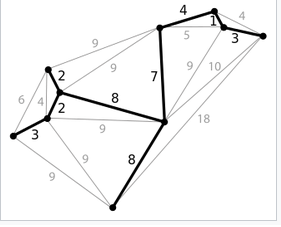Let me give you a small example for the Minimum spanning tree out of https://en.wikipedia.org/wiki/Minimum_spanning_tree

.mod
tuple edge
{
key int o;
key int d;
int weight;
}
{edge} edges=...;
{int} nodes={i.o | i in edges} union {i.d | i in edges};
range r=1..-2+ftoi(pow(2,card(nodes)));
{int} nodes2 [k in r] = {i | i in nodes: ((k div (ftoi(pow(2,(ord(nodes,i))))) mod 2) == 1)};
dvar boolean x[edges];
minimize sum (e in edges) x[e]*e.weight;
subject to
{
sum(e in edges) x[e]==card(nodes)-1;
// Subtour elimination constraints.
forall(k in r) // all subsets but empty and all
sum(e in edges:(e.o in nodes2[k]) && (e.d in nodes2[k])) x[e]<=card(nodes2[k])-1;
}
{edge} solution={e | e in edges : x[e]==1};
execute
{
writeln("minimum spanning tree ",solution);
}
.dat
edges=
{
<1,2,9>,
<1,3,9>,
<1,4,8>,
<1,10,18>,
<2,3,3>,
<2,6,6>,
<3,4,9>,
<3,5,2>,
<3,6,2>,
<4,5,8>,
<4,7,7>,
<4,9,9>,
<4,10,10>,
<5,6,2>,
<5,7,9>,
<6,7,9>,
<7,8,4>,
<7,9,5>,
<8,9,1>,
<8,10,4>,
<9,10,3>,
};
which gives
minimum spanning tree {<1 4 8> <2 3 3> <3 5 2> <4 5 8> <4 7 7> <5 6 2> <7 8 4>
<8 9 1> <9 10 3>}
regards
regards
#DecisionOptimization